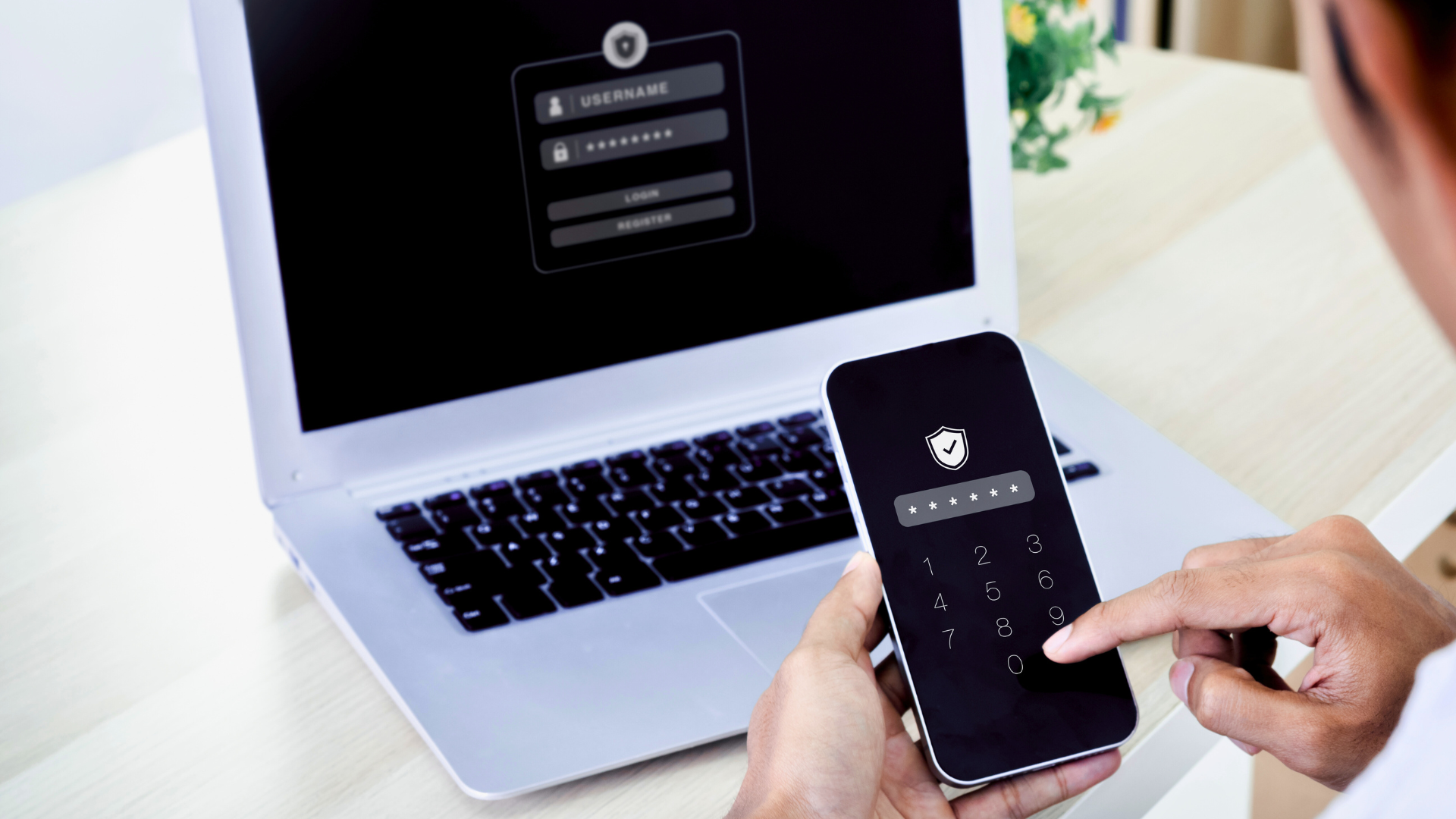When it comes to protecting your digital identity and business data, passwords alone aren’t cutting it anymore. With cyberattacks becoming more sophisticated and user credentials being one of the most common entry points for hackers, an extra layer of security is no longer a nice-to-have. It’s a must. That’s where two-factor authentication, or 2FA, and multi-factor authentication, or MFA, comes in.
Whether you’ve encountered 2FA and MFA when logging into your email or heard about it from your IT team, here’s what you need to know about how it works, why it matters, and how your company can use it to stay more secure.
What is Two-Factor Authentication or Multi-Factor Authentication?
Two-factor authentication (2FA) is security process that requires users to verify their identity in two different ways before they can access an account, application, or system. Multi-factor authentication is the same process, but may involve more than two factors. The two names can often be used interchangeably.
Think of it as having multiple locks. Instead of just entering a username and password (which can be guessed, stolen, or leaked), you’re also asked to verify with additional factors, like a code sent to your phone or a fingerprint scan.
2FA and MFA are based on verifying something you know (your password) and something you have (like your mobile device or authentication app).
The Most Common Types of 2FA/MFA
Not all second factors are created equal, but these are the most widely used:
- Text Message (SMS) Codes: A one-time code sent to your phone via text. This is the most basic form of 2FA, but not the most secure.
- Authentication Apps: Apps like Google Authenticator, Microsoft Authenticator, or Duo generate a new time-based code every 30 seconds. This is far more secure than SMS.
- Push Notifications: A message sent to your device asking you to approve or deny the login attempt.
- Biometrics: Fingerprint scans, facial recognition, or retina scans commonly used in phones and some high-security apps.
- Physical Security Keys: A USB device or smart card you plug in or tap to verify your identity. These are often used in highly secure environments.
Why Your Business Needs Multi-Factor Authentication
Even strong passwords can be cracked. In fact, many data breaches happen not because someone hacks a system, but because they log in with legitimate credentials obtained through phishing or dark web leaks.
2FA and MFA dramatically reduce the risk of unauthorized access, even if your password is stolen.
Here’s how it helps:
- Stops attackers in their tracks: A stolen password is useless without the second factor.
- Protects sensitive data: Keeps emails, cloud files, and systems secure.
- Meets compliance requirements: Many industries now require multi-factor authentication for regulatory reasons.
- Builds trust with clients and partners: Demonstrates that you take data protection seriously.
Conditional Access Policies Can Enhance MFA
Applying Conditional Access (CA) policies significantly enhances the effectiveness of MFA by making it more adaptive, targeted, and secure.
Rather than enforcing MFA universally, CA policies allow organizations to trigger MFA based on specific conditions, reducing unnecessary prompts and improving user experience. This ensures stronger security without burdening users in low-risk scenarios.
With Conditional Access, organizations benefit from:
- Context-aware enforcement: Require MFA only when certain risk factors are present, such as logins from unfamiliar IP addresses or untrusted devices.
- Granular policy control: Apply different rules for different user groups, apps, or device types (e.g., stricter policies for executives or access to financial systems).
- Real-time risk response: Automatically prompt for MFA or block access entirely if a user or session is flagged as risky based on real-time signals from Microsoft Entra ID Protection.
- Improved compliance and governance: Ensure consistent MFA enforcement across the organization and easily demonstrate adherence to regulatory standards like HIPAA, NIST, or CIS.
How to Roll Out 2FA in Your Organization
Rolling out 2FA doesn’t have to be a heavy lift. With the right support, it can be integrated smoothly into your current systems. Here’s a quick roadmap:
- Assess Your Environment: Determine which systems, apps, and users require 2FA.
- Choose the Right 2FA Method: Balance ease of use with the level of security needed. Push notifications or authenticator apps often strike the best balance.
- Educate Your Team: Explain the why behind 2FA and walk them through setup. If your team understands the benefits, adoption will be much smoother.
- Start with Critical Systems: Begin with email, VPN, file storage, and anything tied to sensitive data.
- Monitor and Support: Keep an eye on adoption and provide help when needed. A trusted IT partner can handle much of this for you.
Final Thoughts: It’s a Small Step with Big Impact
2FA might seem like an extra step, but it’s one that can prevent big problems. For businesses, it’s one of the simplest, most effective security upgrades you can make.
Cybersecurity doesn’t have to be overwhelming. It starts with smart, straightforward steps like two-factor authentication and an IT team who can help you make the right moves.
Need Help Rolling Out 2FA?
Whether you want to secure a remote workforce, protect sensitive customer data, or meet industry compliance requirements, PCI can help. Let’s talk about how to make your business more secure.
